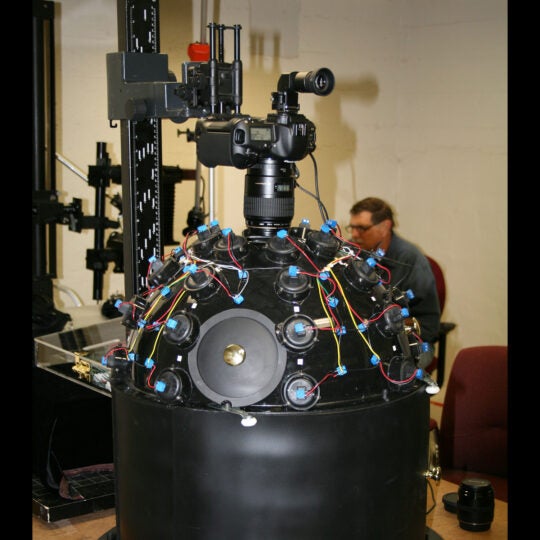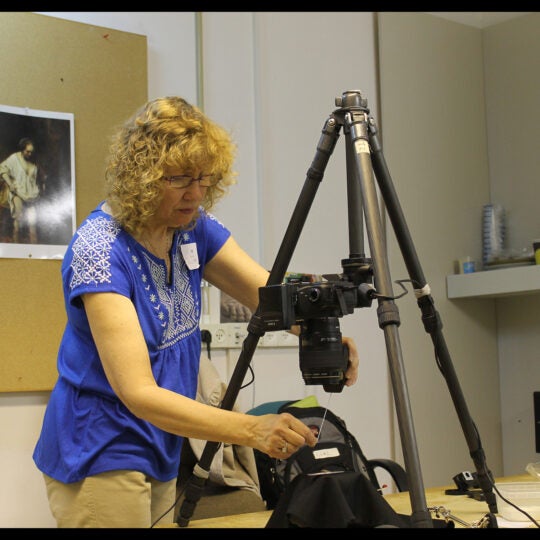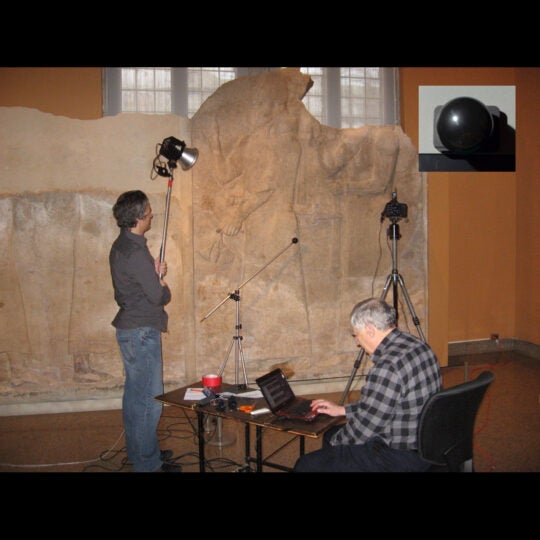Reflectance Transformation Imaging
For objects that are incised, or for imaging the texture of parchment or papyrus, it is important to photograph using many light angles, something which WSR has always made a priority. This has been made easier using Reflectance Transformation Imaging (RTI) technology, originally developed by Hewlett-Packard as Polynomial Texture Mapping (PTM). An RTI image is created by taking many digital photographs, each from a different light angle (see RTI Demo). The images are then combined using special software, the result being an image in which one can view an object from any light angle. One can build a dome with many lights, as illustrated below, or use a hand-held flash or other light source to take the place of the fixed lights of the dome. As each image is captured, a highlight is registered on a shiny ball placed within the frame of each image, and these highlights are read by a computer program that then calculates the coordinates of each light position in the creation of the interactive image. Such a highlight-RTI technique is particularly well suited for field-environments, or for larger objects.
Four software relating to the capture and processing of RTI images, see the resources at Cultural Heritage Imaging.
RTI Dome
Dome with LED lights and stationary camera. The builder of the dome, John Melzian, can be seen in the background. The technology was originally developed by Tom Malzbender and Dan Gelb at the Hewlett-Packard Packard Imaging Labs.
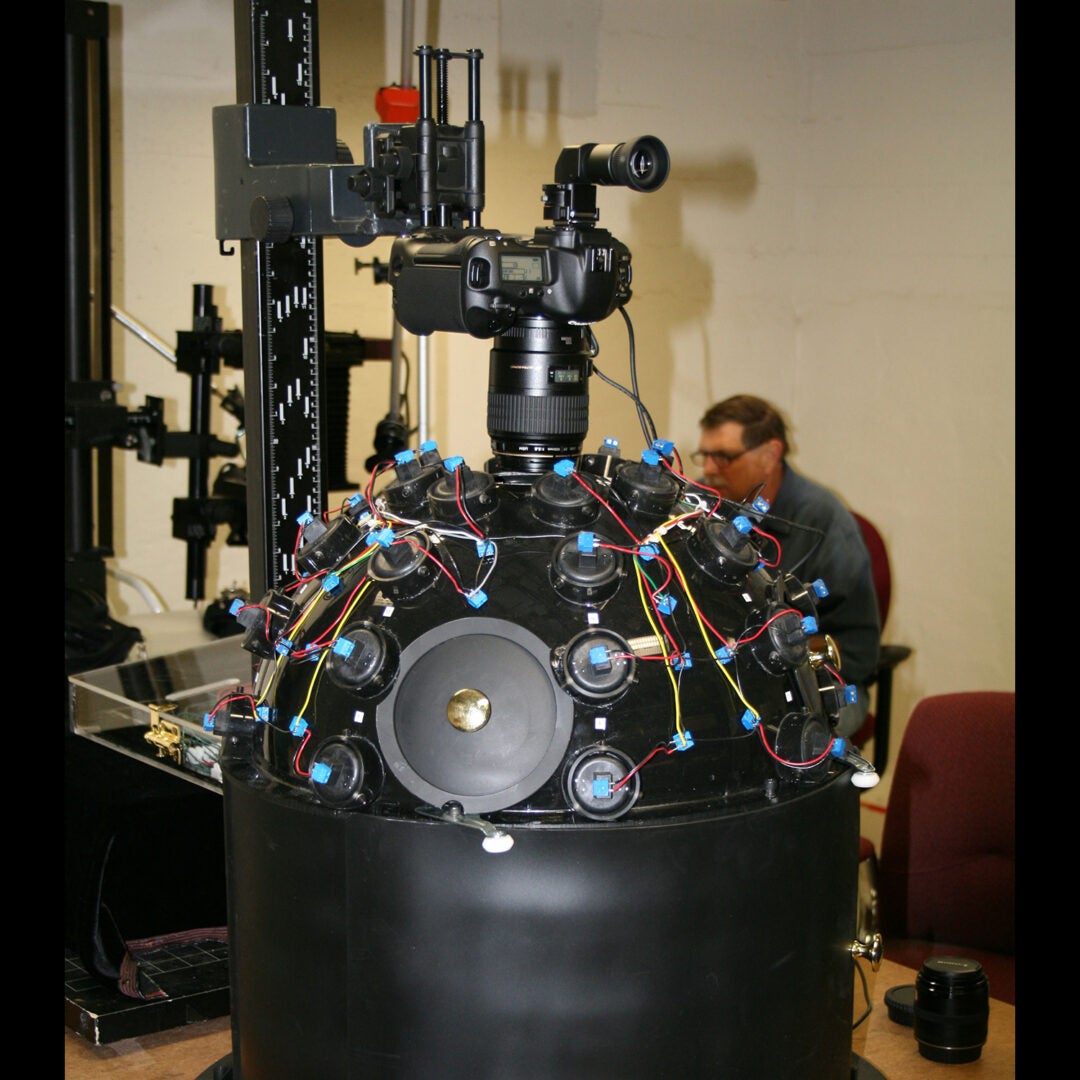
Using Highlight-RTI for small objects
A tripod can be placed on a table, with the camera above the object. A flash is used in a dome-like pattern, and highlights are captured on a shiny ball in the picture. Cultural Heritage Imaging and its colleagues developed this ability to use highlight RTI, which makes RTI much more portable. See full acknowledgements at https://culturalheritageimaging.org/What_We_Offer/Downloads/Process/index.html.

Using Highlight-RTI for large objects
Highlight-RTI can also be used for large objects. In that case, camera is often set up facing the object, and a much larger shiny ball is used. Powerful flashes are necessary in order to provide enough light at the distance necessary for the imaging.
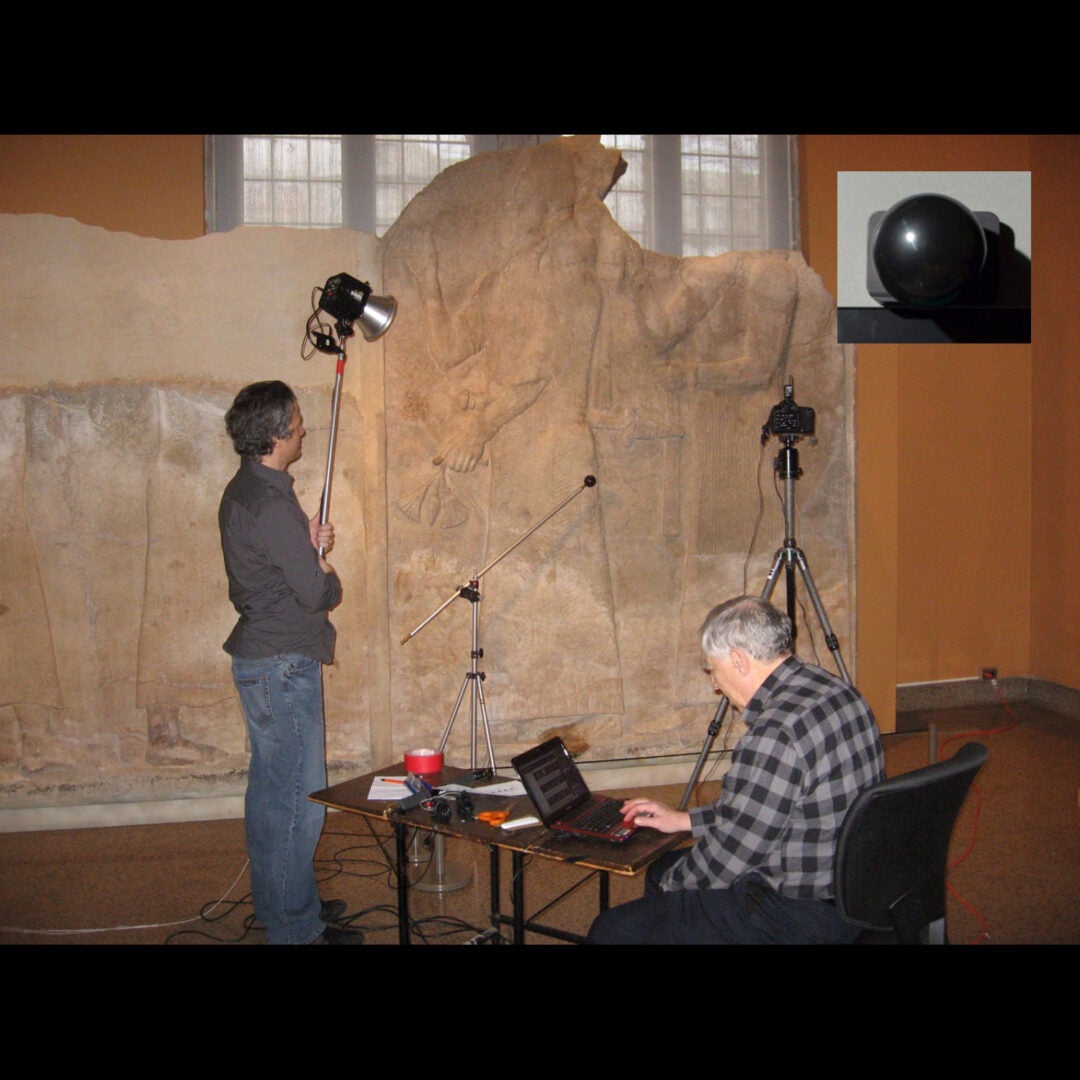
Sample RTIs
Below are videos of some RTI images, showing the different tools that can be used to illuminate a text or artifact.
